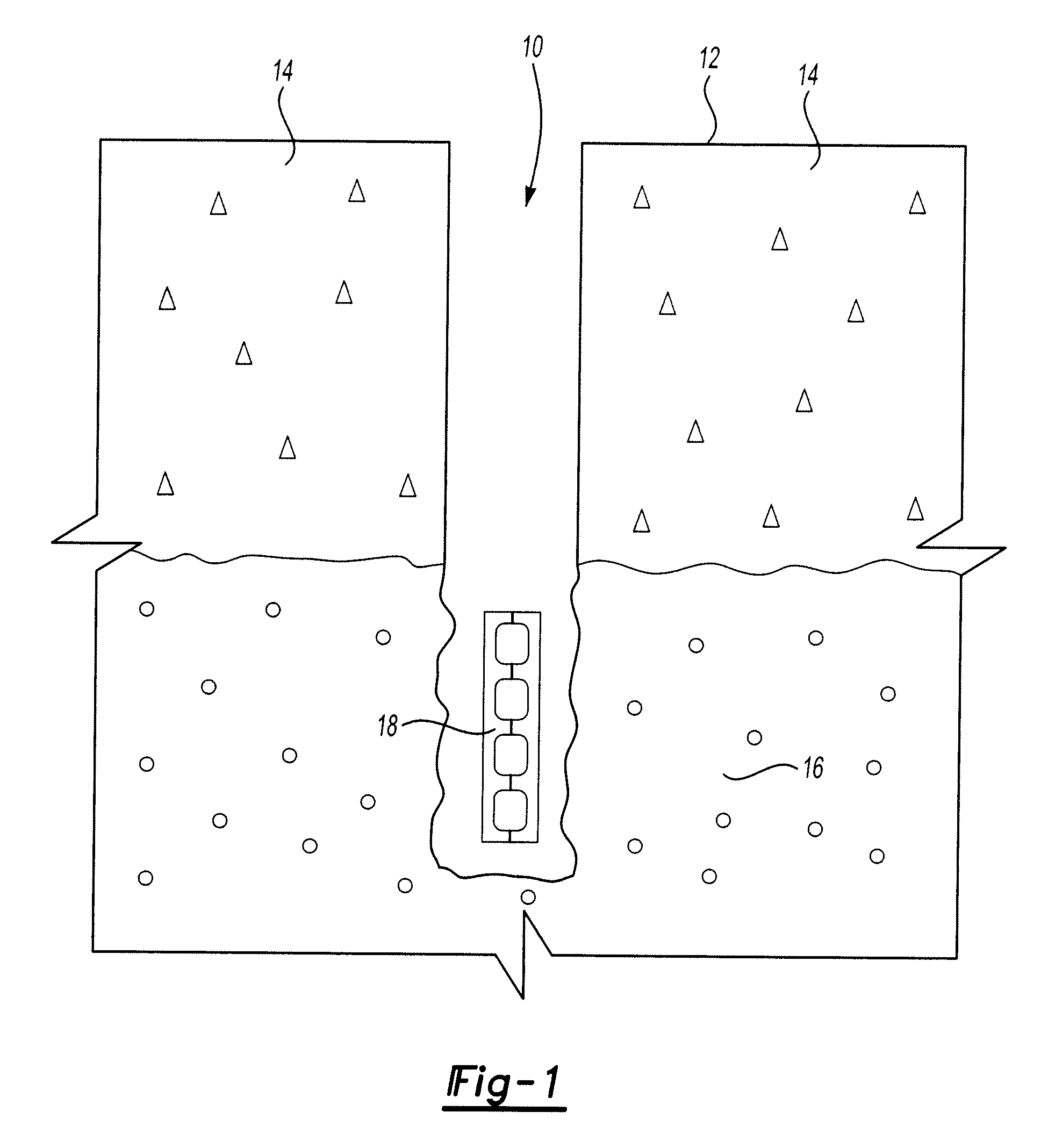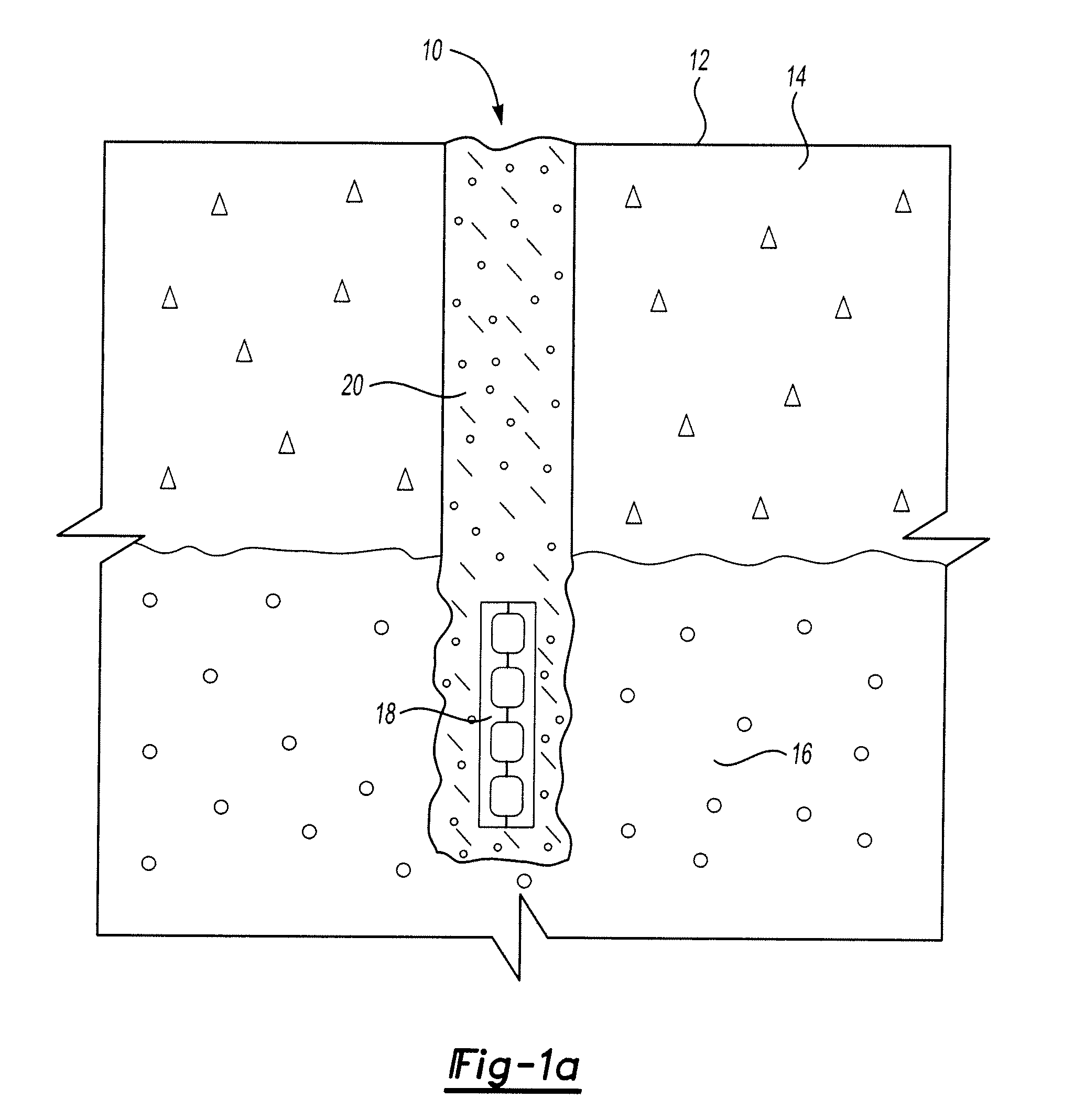Grout for filling a micro-trench
a technology for filling micro-trench and grout, which is applied in the direction of artificial islands, solid waste management, sustainable waste treatment, etc., can solve the problems of large shrinkage amount, relatively significant surface defects, and disadvantages of portland cement-blended grout products in filing micro-trench, so as to reduce complication and cost, resist shrinkage and cracking, and reduce cost
- Summary
- Abstract
- Description
- Claims
- Application Information
AI Technical Summary
Benefits of technology
Problems solved by technology
Method used
Image
Examples
Embodiment Construction
[0022]The present disclosure provides an exemplary embodiment of a micro-trench grout mixture with a formulation having various constituents to ensure the performance of the grout material. Factors such as set time, fluidity, consolidation and stability make these formulations unique in nature and the balancing of product ingredient interaction can dramatically affect the performance of each factor. Additionally, the complete consolidation and non-porosity of the product while fluid flowing into the mechanical separations of a two-piece micro-duct, when upon hardened, gives the ability to pull a complete vacuum, which provides unique product characteristics.
[0023]The phrase “single component grout” material is intended to refer to a cementitious grout material in a single bag that can be mixed with water to make a prepared cementitious grout material that can be used in a micro-trench application to prepare a finished grout.
[0024]Micro-trenching is an emerging market that is being d...
PUM
| Property | Measurement | Unit |
|---|---|---|
| temperatures | aaaaa | aaaaa |
| temperatures | aaaaa | aaaaa |
| depth | aaaaa | aaaaa |
Abstract
Description
Claims
Application Information
 Login to View More
Login to View More - R&D
- Intellectual Property
- Life Sciences
- Materials
- Tech Scout
- Unparalleled Data Quality
- Higher Quality Content
- 60% Fewer Hallucinations
Browse by: Latest US Patents, China's latest patents, Technical Efficacy Thesaurus, Application Domain, Technology Topic, Popular Technical Reports.
© 2025 PatSnap. All rights reserved.Legal|Privacy policy|Modern Slavery Act Transparency Statement|Sitemap|About US| Contact US: help@patsnap.com



